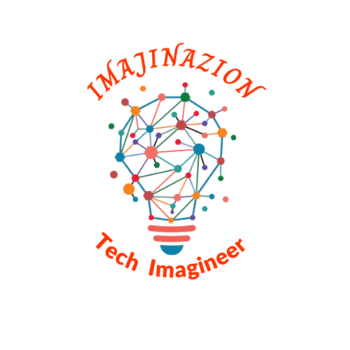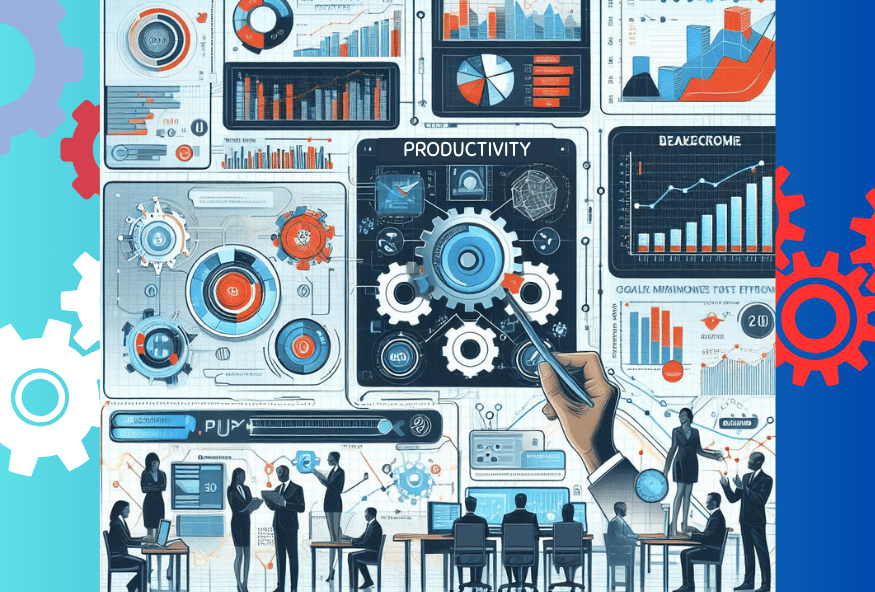How Does Technology Increase Productivity In The Workplace: 25 Ways
Introduction:
In the modern landscape, the question of “How does technology increase productivity?” has never been more pertinent. Technology is the driving force behind unprecedented leaps in efficiency, automating tasks and facilitating seamless collaboration. This article dives into the ways technology accelerates productivity, shedding light on the strategies and tools that empower businesses and individuals to achieve more in less time.
Key Takeaways:
How Does Technology Increase Productivity?
Technology is vital to making the workplace more productive because it gives us tools and solutions that speed up processes, automate repetitive chores, and improve communication and teamwork. Here are some ways in which new technology boosts workplace productivity:
- Automation: Technology allows for automating various manual and repetitive tasks. This system frees up employees’ time and enables them to focus on more important tasks. For example, software automation can handle data entry, report generation, and scheduling, reducing human error and speeding up processes. Marketing automation is another example that resulted in increased productivity, increase in sales, and boost business growth.


Systeme.io
Systeme.io is an all-in-one Marketing automation platform. It gives you everything you need to create sales funnels, email campaigns, online courses, and more. And it’s incredibly affordable – you can get started for free and pay as you grow. Don’t miss this opportunity – sign up for the Free Version Forever Plan now.
- Communication and Collaboration: Modern technologies such as email, instant messaging, video conferencing, and collaborative platforms facilitate quick and efficient communication among team members. These tools enable seamless collaboration, irrespective of physical location, thereby improving productivity by reducing delays and enhancing information sharing.
- Improved Efficiency: New technologies provide tools and software that streamline business processes. For instance, project management software helps organize tasks, set priorities, and track progress. Similarly, customer relationship management (CRM) systems centralize customer data, enabling efficient sales and marketing activities. Such tools enhance efficiency, reduce time wastage, and allow employees to work more productively.
- Access to Information: Employees can access vast information instantly with the internet and digital resources. Knowledge and data availability enable them to make better-informed decisions, resolve issues faster, and avoid time-consuming research. Additionally, cloud storage and file-sharing services facilitate easy access to documents and files, fostering collaboration and reducing time spent searching for information.
- Remote Work and Flexibility: Technological advances allow people to work from home and set their own work hours. Employees can now work from anywhere, using digital tools and platforms to stay connected and efficient. This flexibility reduces commuting time, increases work-life balance, and can enhance overall productivity.


- Data Analysis and Insights: Advanced analytics and data-driven tools help business owners gather and analyze vast amounts of data to derive valuable insights. These insights can be used to identify bottlenecks, optimize processes, and make informed decisions. Data-driven decision-making improves efficiency and productivity by enabling businesses to focus on areas that require attention.
- Cloud Computing: Cloud computing has revolutionized our work. This new technology gives companies a scalable and easy-to-use infrastructure that lets them quickly store and process a lot of data.


- Enhanced Decision-Making: Technological solutions provide data visualization tools and business intelligence platforms that present complex information in a clear and actionable manner. These new technological tools empower decision-makers to analyze data, identify trends, and make informed decisions more efficiently. Real-time dashboards and reporting tools enable quick monitoring of key performance indicators (KPIs), facilitating proactive decision-making.
- Streamlined HR Processes: Human resources (HR) departments can use technology to automate and streamline administrative tasks, such as employee onboarding, payroll processing, leave management, and performance evaluations. Using the latest technology reduces paperwork, eliminates manual errors, and frees HR professionals’ time to focus on strategic initiatives, talent development, and employee engagement.
- Training and Skill Development: Today’s technology enables convenient and practical training and skill development programs. Online learning platforms, webinars, and virtual classrooms allow employees to enhance their knowledge and skills without time-consuming travel or scheduling conflicts. This continuous learning culture contributes to improved employee performance and higher productivity.


- Efficient Project Management: Project management tools and software help teams plan, organize, and execute projects more efficiently. These automation tools facilitate task assignment, progress tracking, resource allocation, and collaboration among team members. Project managers can monitor timelines, identify bottlenecks, and allocate resources effectively, ensuring projects are completed on time and within budget.
- Improved Customer Service: Technology enhances customer service and ultimately impacts productivity. Customer relationship management (CRM) programs enable organizations to track customer interactions, manage leads, and provide personalized service. Integrated communication channels like live chat, social media, and chatbots allow quick and effective customer support, resulting in higher customer satisfaction and loyalty.


Pipedrive
Elevate your sales game with Pipedrive, a CRM platform tailored to your needs. Experience seamless sales automation, robust security, and extensive tool integrations that simplify your processes and grow your business. Transform your customer relationships from managed to mastered with Pipedrive.
- Virtual Meetings and Webinars: Software tools enable virtual meetings and webinars, reducing the need for travel and allowing participants to join from different locations. This solution saves time and expenses and enhances productivity by enabling real-time collaboration, knowledge sharing, and decision-making.
- Advanced Manufacturing and Automation: In industries like manufacturing, technology advancements such as robotics, machine learning, and artificial intelligence (AI) have revolutionized production processes. Automated assembly lines, intelligent machinery, and predictive maintenance systems optimize production efficiency, reduce errors, and minimize downtime, leading to increased productivity.
- Enhanced Security and Data Protection: Technology solutions provide robust security measures to protect sensitive business data and intellectual property. This solution ensures that critical information stays safe and reduces the risk of data breaches or unauthorized access. A safe environment instills confidence and allows employees to focus on tasks without worrying about data security.


- Task and Time Management: Digital technology provides various tools and applications that help individuals manage their tasks and time more effectively. Digital calendars, to-do lists, and productivity apps enable employees to prioritize work, set reminders, and track progress. This new system promotes better time management, reduces procrastination, and increases employee productivity.
- Data Storage and Retrieval: Digital Technology enables efficient data storage and retrieval, eliminating the need for manual filing systems and physical documentation. Digital databases, cloud storage, and document management systems allow quick and easy access to information. This system saves time searching for files, enhances collaboration, and ensures data integrity.
- Virtual Collaboration Tools: With the advent of technology, virtual collaboration has become seamless. Online project management platforms, shared document repositories, and virtual whiteboards facilitate teamwork and information sharing. Remote teams can collaborate in real-time, provide feedback, and work together on projects, even while remote working.


- Performance Monitoring and Analytics: Technology provides tools for tracking and monitoring employee performance and productivity. Employee monitoring software, performance dashboards, and analytics platforms allow managers to measure individual and team performance, identify areas for improvement, and optimize workflows. This data-driven approach helps optimize resource allocation, identify training needs, and enhance productivity.
- Personalized User Experience: Technology enables personalizing user experiences based on individual preferences and needs. Customizable interfaces, intelligent algorithms, and machine learning algorithms allow employees to tailor their digital workspace to suit their workflows. This personalized experience boosts efficiency, reduces cognitive load, and enables employees to focus on their core tasks.
- Advanced Communication Tools: Modern technology provides advanced communication tools beyond traditional email and phone calls. Video conferencing, screen sharing, and virtual meeting platforms facilitate rich, real-time communication. This tool enables better understanding, faster decision-making, and improved collaboration among team members, regardless of geographical location.


- Customer Relationship Management (CRM): CRM software empowers organizations to manage customer interactions effectively. It enables businesses to track customer preferences, history, and feedback, facilitating personalized customer service. CRM systems improve customer engagement, improve conversion rates, and drive income growth by making sales and marketing processes more efficient. Study these CRM tools and see which best fits your business.
- Enhanced Mobility: Mobile technology allows employees to access work-related information and tools from anywhere, anytime. Mobile applications, remote access to company systems, and mobile-friendly interfaces enable mobile employees to stay connected and productive while on the go. This flexibility boosts productivity and supports the demands of a mobile workforce.
- Continuous Process Improvement: Technology facilitates continuous process improvement by providing tools for data analysis, workflow optimization, and performance tracking. Organizations can identify inefficiencies through data-driven insights, optimize processes, and implement changes that improve productivity over time.
- Artificial Intelligence (AI) and Machine Learning (ML): AI and ML technologies can revolutionize productivity by automating complex tasks, predicting trends, and offering intelligent recommendations. Chatbots, virtual assistants, and automated data analysis tools leverage AI to handle routine inquiries, perform data analysis, and generate insights, freeing human resources for more strategic and creative work.


Successfully integrating the right technology into the workplace requires careful consideration of organizational needs, employee training, and ongoing evaluation. In today’s rapidly changing digital world, companies can gain a competitive advantage and increase productivity by using technology well.
How Does Technology Increase Productivity In Companies: Success Stories
- Amazon: Amazon is a prominent example of a company that has leveraged technology to transform its operations and enhance business productivity. Amazon has streamlined its fulfillment centers using advanced robotics, automation, and artificial intelligence, improving order processing, inventory management, and shipping efficiency. Additionally, Amazon’s use of data analytics and machine learning algorithms has allowed for personalized recommendations and optimized logistics, increasing productivity and customer satisfaction.
- Slack: Slack is a platform for conversation and collaboration that has become popular because it helps people get more done at work. By providing a centralized hub for team communication, file sharing, and project management, Slack has streamlined collaboration and reduced the reliance on email and scattered communication channels. The platform’s integration with other tools and services further enhances productivity by consolidating workflows and eliminating the need for constant context switching.
- Tesla: the electric vehicle manufacturer has harnessed technology to revolutionize the automotive industry and increase productivity. From advanced manufacturing processes to data analytics and automation, Tesla utilizes cutting-edge technologies. For instance, Tesla’s Gigafactories employ robotics and AI-powered automation to streamline production and minimize errors. Tesla has been able to increase production, cut costs, and keep up with growing demand by improving its manufacturing methods and using technology.
- Google: Google is renowned for its innovative use of technology to drive productivity. Through its suite of productivity tools, such as Google Workspace (formerly G Suite), Google provides cloud-based collaboration tools like Google Docs, Sheets, and Slides, enabling real-time collaboration and seamless document sharing. Furthermore, Google’s search algorithms and data-driven insights enhance productivity by quickly retrieving information, improving decision-making, and supporting various business processes.
- Zappos: Zappos, an online shoe and clothing retailer, prioritizes technology to improve its customer service and internal operations. The company implemented a sophisticated CRM system that tracks customer interactions and preferences, allowing customer service representatives to provide personalized and efficient support. Zappos also focuses on innovative warehouse management systems and advanced logistics technologies to optimize order fulfillment, ensuring speedy deliveries and high customer satisfaction.
- Airbnb: the online hospitality marketplace has leveraged the help of technology to transform how people find and book accommodations. Airbnb provides hosts with tools for managing their listings, bookings, and guest communications through its platform. By streamlining the rental process and automating tasks such as payment processing and guest verifications, Airbnb has increased efficiency for both hosts and guests, facilitating more seamless and productive transactions.
These examples demonstrate how companies across various industries have successfully utilized technology to enhance productivity and improve their operations. By embracing technological advancements, businesses can unlock new efficiencies, optimize processes, and deliver better products and services to their customers.
Final Thoughts:
Technology is a key part of making the workplace more productive. From automation and streamlined processes to enhanced communication and collaboration, technology offers a wide range of tools and solutions that empower employees and drive efficiency. By automating repetitive tasks, improving communication and knowledge sharing, and providing data-driven insights, technology allows employees to focus on value-added activities, make informed decisions, and work more effectively.
Actual companies, such as Amazon, Slack, Tesla, Google, Zappos, and Airbnb, have successfully harnessed technology to boost productivity and gain a competitive edge in their respective industries.
Organizations that embrace and leverage technology effectively can unlock new productivity levels, improve customer experiences, and achieve sustainable growth in today’s fast-paced digital landscape. As technology evolves, businesses must remain adaptable and agile, staying abreast of the latest innovations to harness the productivity-boosting potential that technology offers fully.
FAQ:
How does technology affect employee productivity?
Technology can impact employee productivity positively or negatively:
- Positive Impact: Streamlined workflows, access to information, and remote work options enhance productivity.
- Negative Impact: Distractions (e.g., social media), technical issues, and overreliance on technology can reduce productivity.
How does technology lead to more efficient production?
Technology improves production efficiency through:
- Precision: Automation and robotics ensure consistent quality and reduce errors.
- Real-time Monitoring: Sensors and analytics allow real-time tracking of production processes.
-
- Supply Chain Optimization: Technology streamlines supply chain management, reducing delays.
What is the role of technology in the production process?
Technology plays a crucial role in production:
- Design and Prototyping: Computer-aided design (CAD) software helps create product designs.
- Manufacturing: Robotics, CNC machines, and 3D printing enable efficient production.
- Quality Control: Technology ensures product quality through inspections and testing.
What are the two ways technology can negatively impact productivity at work?
- Distractions: Excessive use of technology for non-work purposes (e.g., social media) can reduce productivity.
- Technical Issues: Downtime due to system failures or software glitches hamper productivity.
How can technology be utilized for productivity and time management in daily life?
- Task Management Apps: Use apps like Todoist or Trello to organize tasks and deadlines.
- Time Tracking Tools: Apps like RescueTime help monitor time spent on different activities.
- Digital Calendars: Sync your schedule across devices for efficient time management.
- Health and Fitness Apps: Use technology to track exercise, sleep, and overall well-being.










Excellent read, I just passed this onto a friend who was doing a little research on that. And he just bought me lunch because I found it for him smile So let me rephrase that: Thanks for lunch! “A human being has a natural desire to have more of a good thing than he needs.” by Mark Twain.
Fantastic site Lots of helpful information here I am sending it to some friends ans additionally sharing in delicious And of course thanks for your effort
Nice Article
The information shared is of top quality which has to get appreciated at all levels. Well done…
A great post without any doubt.
Thank you for sharing indeed great looking !
Thanks for enabling me to gain new concepts about computers. I also possess the belief that one of the best ways to maintain your notebook in best condition is to use a hard plastic material case, or shell, that will fit over the top of one’s computer. A lot of these protective gear are usually model precise since they are manufactured to fit perfectly on the natural outer shell. You can buy these directly from the seller, or from third party places if they are intended for your laptop, however only a few laptop may have a covering on the market. Once more, thanks for your guidelines.
I needed to thank you for this excellent read!! I certainly loved every little bit of it. I’ve got you saved as a favorite to look at new stuff you post…
We’re a gaggle of volunteers and opening a brand new scheme in our community. Your site offered us with valuable info to work on. You’ve performed an impressive job and our whole group shall be grateful to you.
Greetings! Very useful advice in this particular post! It’s the little changes that make the greatest changes. Thanks for sharing!
nice article ave a look at my site “https://www.newsbreak.com/crypto-space-hub-313321940/3799652652916-top-crypto-investments-in-2025-bitcoin-ai-projects-tokenized-assets”